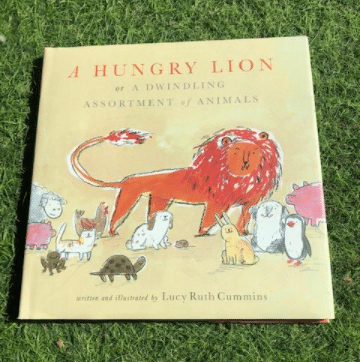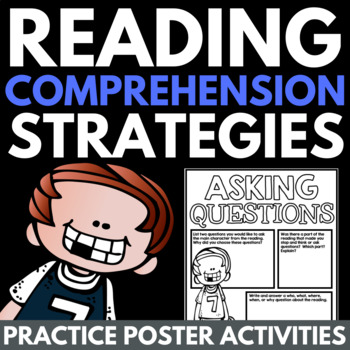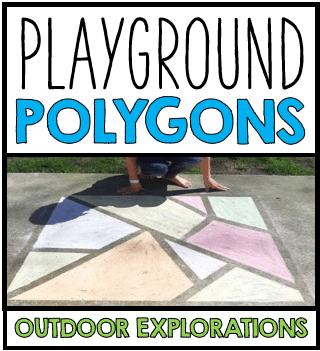Simple Strategies for Making Inferences
By MARISSA DESPINS Updated April 09, 2024
Today’s post is all all about making inferences. I discuss what they are and why they are essential for reading comprehension. Also, I have added some tips and tricks for teaching this powerful reading strategy.
For some quick and easy teaching resources for introducing reading strategies in your classroom, click on the image or button below!
(This post contain affiliate links which means I make a small commission if you make a purchase, at no additional cost to you. Thank you for your support!)
What is an Inference?
Basically, an inference is a conclusion that the reader comes to through using text evidence and their own background knowledge to better understand the author’s meaning.
To read more about different reading strategies, check out our complete reading comprehension strategy guide!
Why is it important to teach students how to make inferences?
According to reading guru Robert J. Marzano,
“Making inferences is a foundational skill and prerequisite for higher-order thinking and 21st century skills“
Understanding how to make inferences is truly powerful. It’s not an exaggeration to say that inference forms the bedrock of nurturing young readers. The ability to infer is vital as it empowers students with the tools to delve deeper into texts, providing them with the groundwork to tackle more complex content and concepts like foreshadowing and symbolism. Through inference, students can gain a deeper grasp of an author’s intentions, navigate intricate character developments, and draw connections between various themes. The capacity to infer from our reading material stands as a foundational skill, a necessary step for readers to move beyond surface-level comprehension.
How can students become successful at making inferences?
Making inferences is no easy task. Inferring requires careful reading of a text, as the reader must gather clues about what the author is trying to say. Inferring also requires the reader to think back on their own experiences and background knowledge in order to come to a solid conclusion. It requires students to be active readers, filling in the holes to discover the message that is is not directly given in written words. It is a skill that must be explicitly taught and practiced.
Successful Strategies for Teaching Students to make Inferences
Because this is such an important reading skill, I spend a lot of our reading time focusing on and practicing this concept. I have included some of my favorite ways to teach students to infer below. I hope you are able to take some of these strategies and try them out in your own classroom.
Making Inferences with Picture Books
Picture books are a great way to practice the inferring strategy. Check out some of my favorites below!
A Hungry Lion or a Dwindling Assortment of Animals
One of my favourite ways to introduce the concept of inferring with my students is through the picture book A Hungry Lion or a Dwindling Assortment of Animals by Lucy Ruth Cummins.

This book follows the exploits of a hungry lion in a room full of smaller animals. As you read the story aloud, there are multiple great points to stop and make inferences. Students must use their shared background knowledge (we know lions eat smaller animals, for example) and text evidence (the animals keep disappearing) to solve the mystery of what is happening to the “dwindling assortment of animals”. It makes for fantastic class discussion, especially as the story has a few very funny surprises. I also like that it sets up the idea that an inference is really just a guess based on background knowledge and text clues, and, while helpful, isn’t always correct.
A Bad Day at Riverbend
Another Favorite picture book to work on the skill of inferring with students is Bad Day at Riverbend by the great Chris Van Allsburg. Like all Van Allsburg books, the illustrations in this story are absolutely gorgeous. This book also has a great twist to it. As a result, it is a perfect story for making inferences. The surprise on the kiddos faces when they realize the twist is priceless. You can read all about how I use this story to aid students in making inferences in this blog post.
To read more information about this engaging activity, check out our post on teaching inferring.
Making Inferences using Photographs

Another activity I like to do with my group to sharpen our inference skills involves using photographs. By using only images, and no text, students really have to carefully observe what is going on in the picture. For this activity, I asked a student to choose an animal image from a stack of photographs we often use as writing prompts during our Writer’s Workshop time. I taped the image to a sheet of chart paper, and asked the kids to make inferences about what was going on in the picture. Students had to use visual clues as well as their background knowledge to help them make educated guesses.
-“This isn’t his first time scuba diving. He has quality equipment and he doesn’t look scared”.
-“The scuba diver isn’t by himself. Someone else had to have taken the picture”.
-“This is in a place where people scuba dive often. The turtle is used to the scuba diver. He isn’t swimming away and doesn’t seem scared”
Using the pictures really allowed the students to focus on the clues presented without getting weighed down by text, making it a great way to introduce the concept to students.
Detective Inferences
When you really think about it, making an inference is like solving a mystery. You have to read between the lines, hunt for clues, and think about what isn’t actually being said in order to come to a conclusion. To practice this, I like to do a mini crimes scene room transformation.

While the kids are out at recess, I place some crime tape (from amazon) on our door, and set up clues around our classroom. Each group is given some detective swag, as well as a sheet of paper with a variety of image clues. Students must closely examine the images and make inferences about what is going on.

The picture clues above include a pizza box, a text message talking to friends about trying to beat a new video game, a bunch of monster energy drinks, a new copy of Fortnite, and a failed book report. Through examining the evidence, students were able to infer that the student had stayed up late trying to beat the video game, instead of doing his homework.

This image included 6 birthday hats, 7 birthday candles, a pizza box, a zoo ticket, a can of dog food, a new puppy book, and a piece of a birthday banner. The kids were able to infer that the girl was turning 7, had 6 friends attend a birthday party at the zoo, and was getting a new puppy for her birthday.
I had the kids present their inferences to the class, and we discussed whether or not we agreed with the inferences they made. It was a super fun way to make literacy practice fun and engaging.
Inference Practice Pages
I love using these Reading Comprehension Strategy practice posters for practicing inferring, as well as other key reading strategies like determining importance, visualizing, and questioning.
These pages can be used with any text. This makes them super easy to work in to your lessons. Students infer to answer the questions, then color up the cute clip art. These make gorgeous bulletin board displays or interactive notebook additions! You can snag your own set of these posters by clicking on the image below.
I hope this post gives you some fun tips and tricks to practice this important skill in your classroom. Do you have some great ideas for teaching inference skills? I would love to learn from you! Please let me know in the comment section below!
Looking for some free resources to practice reading comprehension?
Grab this full set of Reading Comprehension Practice Pages by clicking on the image below!
Interested in reading more about reading comprehension strategies?
Check out some of my previous posts below.
Building Reading Comprehension Strategies
Visualization Strategies for Reading Comprehension
Text Mapping to aid Reading Comprehension
Questioning Strategies for Reading Comprehension
Interested in signing up for my email list?
If you are interested in signing up for my email list, you can do so by clicking on the link below. I periodically send out emails with free resources, teaching tips, and exclusive deals. Signing up will also give you immediate access to some of my best selling Interactive Notebook resources – foldables, graphic organizers, and other fun activities.












